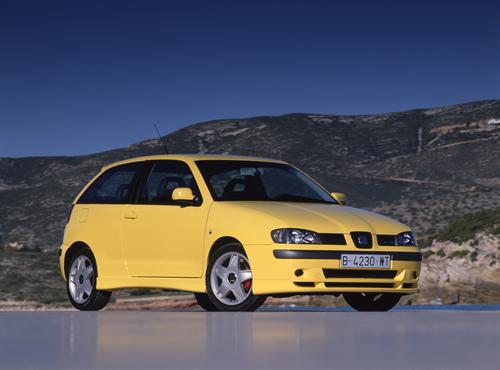
The SEAT Ibiza: sporty, young-spirited and design-driven
For the first generation of the Ibiza (1984-1993), SEAT collaborated with Italdesign, the company of world famous Italian designer Giorgetto Giugiaro, with Karmann for the development of the bodywork, and Porsche for the technology of the ‘System Porsche’ engines.


There was a clear aesthetic leap in the second generation (1993-2002), which again bore the hallmark of Giugiaro. The lines were rounded and aerodynamic, and the car given a level of equipment and mechanical sophistication that were in those days normally only found in cars in the segments above.
Did you know that?
- The approximate price of the SEAT Ibiza in 1984 was 825,000 pesetas (€4,950). At today’s prices that would be €15,620.
- The SEAT Ibiza was the official car at the 1992 Barcelona Olympic Games.
- The second generation of the Ibiza was the first model in its segment to be equipped with a TDI diesel engine, in this case a 90 PS unit.
- The SEAT Ibiza was the first model in its segment to have ESP (electronic stability control) as standard in the whole range.
- Sales by generation:
- Ibiza I, 1984-1993: 1,308,461 units
- Ibiza II, 1993-2002: 1,522,607 units
History: the SEAT Ibiza and the Martorell production plant
SEAT ended the ‘80s with production and sales records, and became a member of the Volkswagen Group. Until 1993 the brand’s activity had been concentrated in the Barcelona Zona Franca, but its membership of a new group, the success of its new models, and the need to increase production meant that a new industrial production complex was required. SEAT would be provided with a new modern factory next to its Technical Centre in Martorell, opened in 1991.
The second-generation Ibiza would be the first vehicle built at SEAT’s new Martorell production facility. More than that, the establishment of the new factory would give rise to the creation of a suppliers’ industrial estate, which at that time comprised 20 companies.

You must be logged in to post a comment.